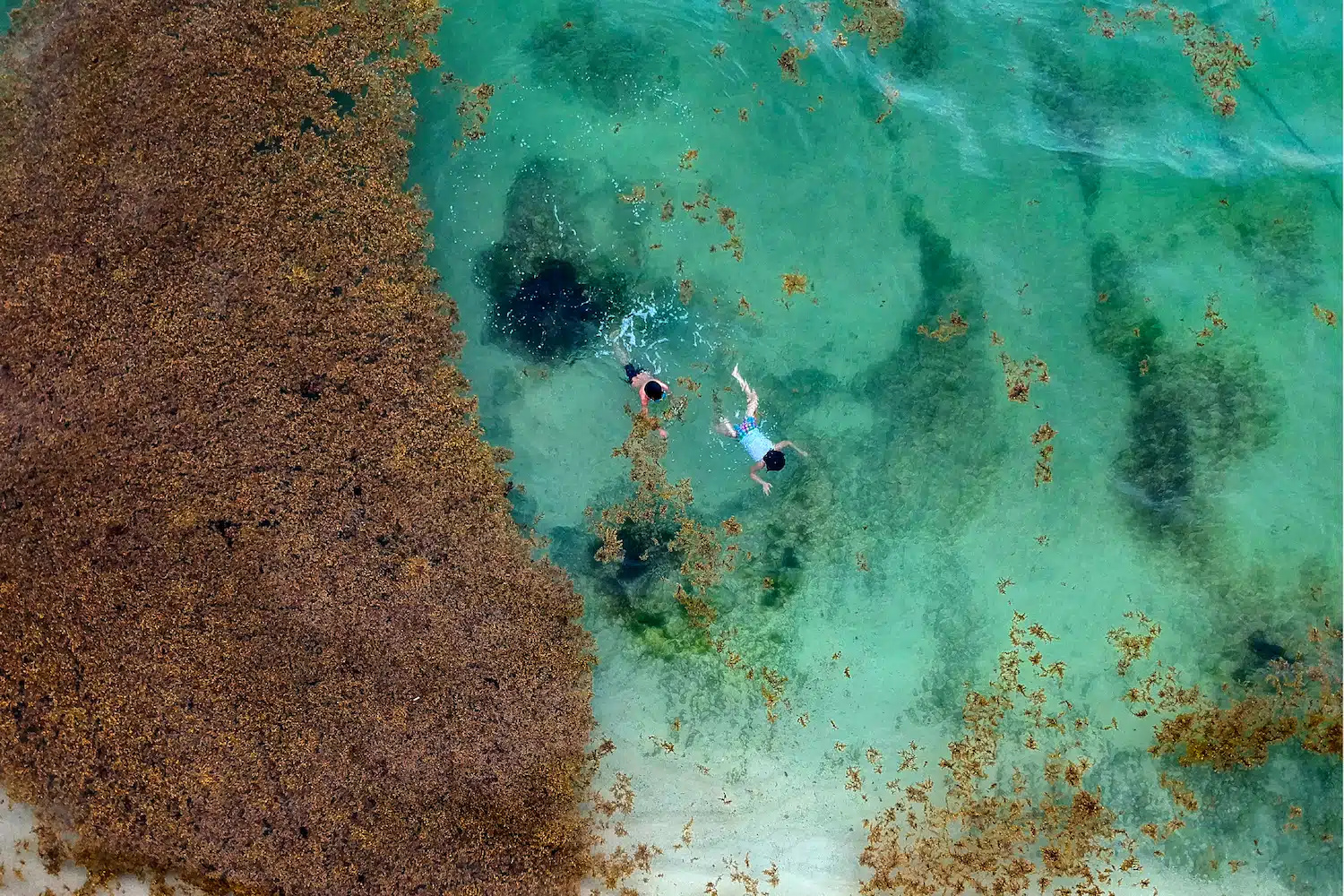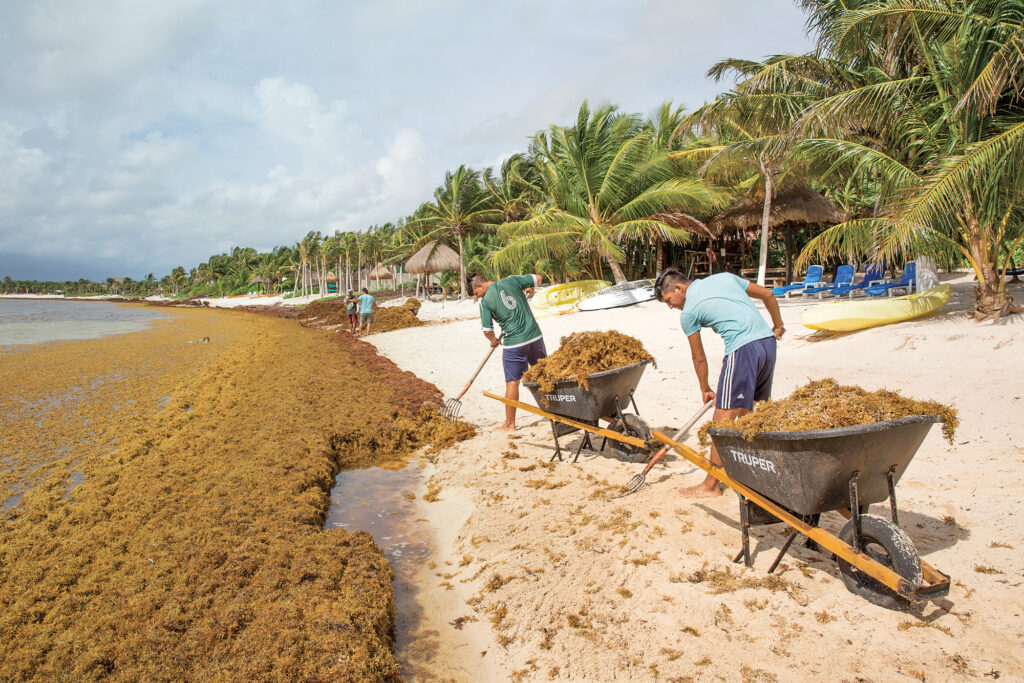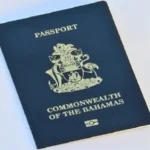Now Reading: Sargassum Surge: What the Growing Seaweed Crisis Means for the Caribbean
-
01
Sargassum Surge: What the Growing Seaweed Crisis Means for the Caribbean

Sargassum Surge: What the Growing Seaweed Crisis Means for the Caribbean
Once a rare visitor, sargassum has become an unwelcome regular along Caribbean coastlines and its presence is only growing. What was once a natural part of the ocean’s ecosystem has now escalated into a crisis with economic, environmental, and social implications for the region. Islands in the Caribbean Sea must prepare for a continued influx of sargassum this month, in the face of record high levels recorded in the eastern Caribbean Sea and west Atlantic, according to a recent report by the Optical Oceanography Lab in the University of South Florida.

Sargassum is a brown seaweed that floats in large mats and naturally occurs in the Sargasso Sea in the Atlantic. It plays a crucial role in marine life, providing shelter for turtles, fish, and other sea creatures. However, since 2011, Caribbean nations have experienced unusually massive influxes, coating beaches with thick, rotting layers of the algae. In 2023 and now into 2025, many coastal communities are seeing unprecedented volumes, disrupting tourism, fishing, and even daily life.
The increase in sargassum is largely attributed to warming ocean temperatures, changes in ocean currents, and increased nutrient runoff from rivers, especially the Amazon. This combination creates a perfect breeding ground for sargassum to bloom and spread.
For island nations dependent on tourism, like Barbados, Saint Lucia, and Grenada, the consequences are particularly severe. Sargassum-covered beaches are not only unpleasant to look at, but also emit a strong sulfur-like odor as the seaweed decomposes. This smell, combined with the unsightly brown piles, deters tourists and lowers income for beachfront businesses.
Local governments and communities are doing what they can. From beach cleanups and floating barriers to seaweed composting projects and scientific monitoring, the Caribbean is adapting. But many agree that this is not just a seasonal nuisance. It’s a sign of broader environmental changes that call for regional cooperation, innovation, and climate-conscious policies.

Beyond its challenges, some are finding opportunities in the sargassum surge. Researchers and entrepreneurs are exploring ways to convert the seaweed into fertilizer, animal feed, or even biofuel. These innovations hint at the potential to turn a problem into a resource, if the right investments are made.
As the region continues to feel the ripple effects of climate change, the growing presence of sargassum is both a warning and a call to action.




























